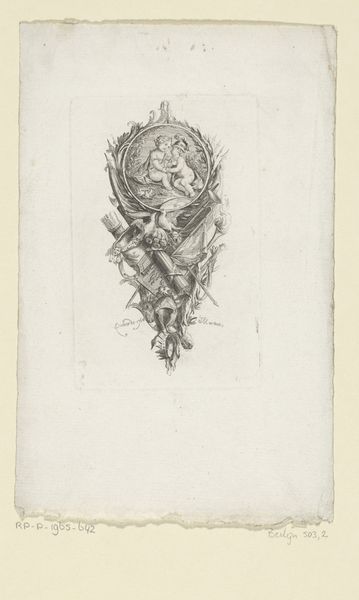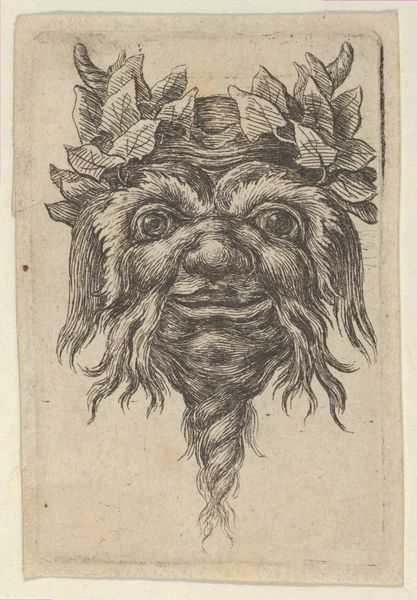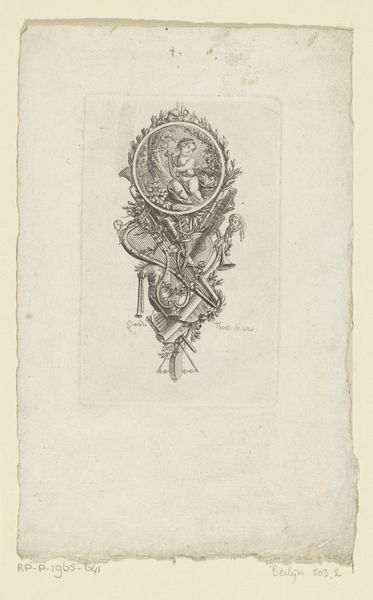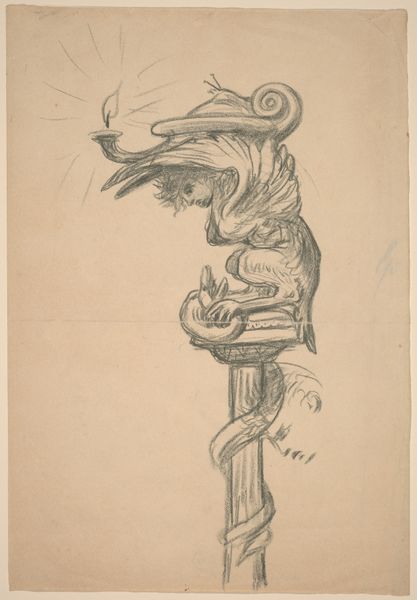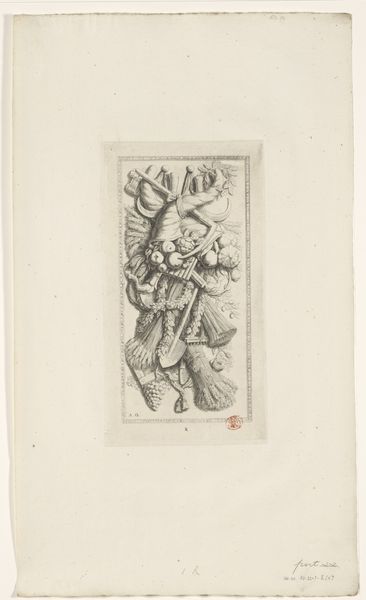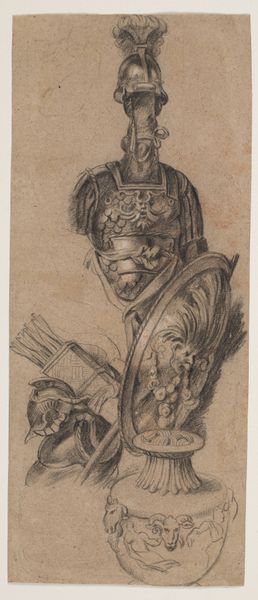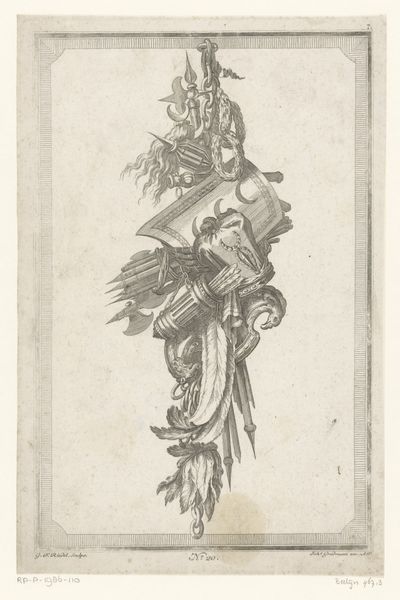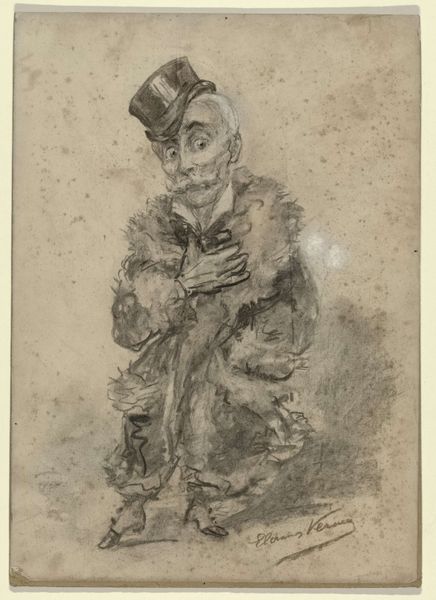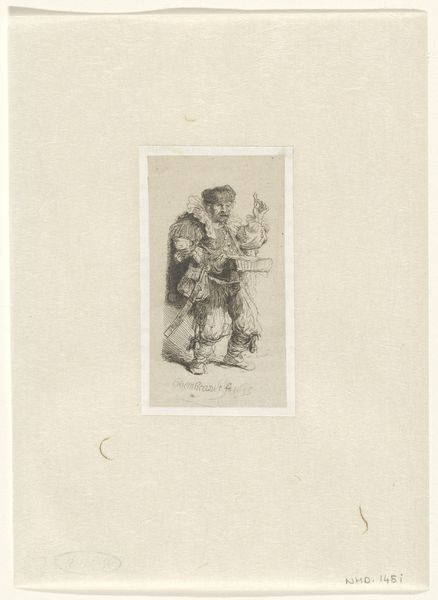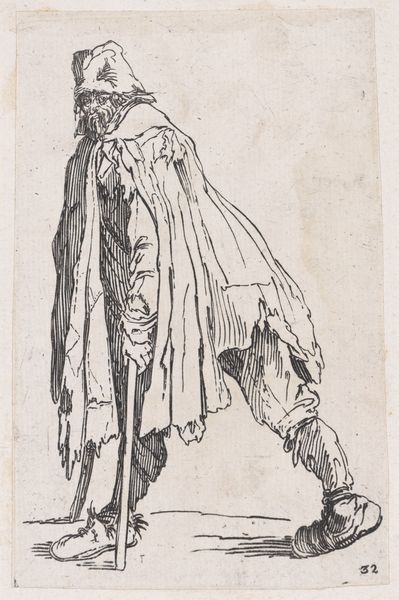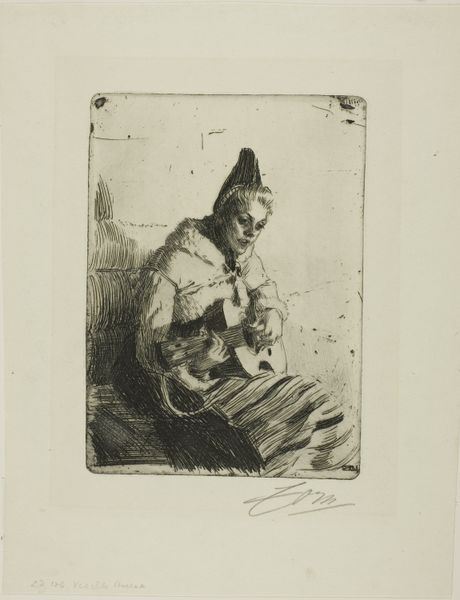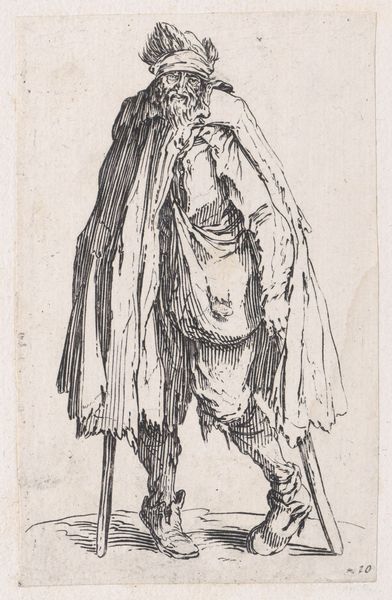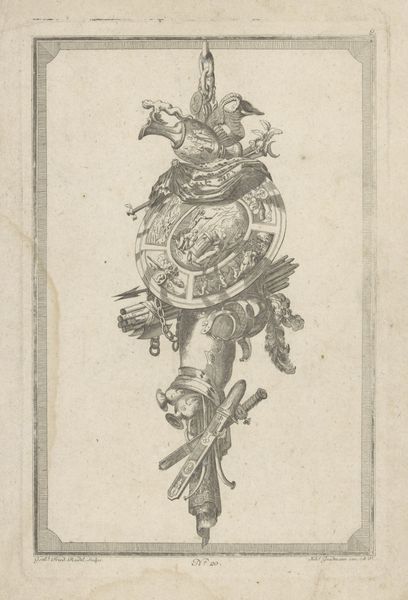
Dimensions: height 130 mm, width 78 mm
Copyright: Rijks Museum: Open Domain
Editor: This is Marie-Thérèse Martinet’s "Trofee met herdersattributen," an engraving from 1768. It's such a delicate, intricate image. The way all the different elements—the garland, the putti—are layered is really captivating. I am curious, what do you see in this piece? Curator: Well, seen through a historical lens, it’s crucial to remember the 18th century and its fascination with the pastoral. Images like this weren’t just decorative; they actively constructed ideas about nature, leisure, and social order. How do you think a trophy depicting these elements would have functioned in the visual landscape of the time? Editor: It does feel very removed from any real agricultural labor. More like a romantic fantasy… almost propaganda? Curator: Precisely. Think about the elite audience for prints like these. What messages were they consuming about rural life? These images often served to gloss over the realities of poverty and social inequality. What's also fascinating is how printmaking itself plays a role. Its reproducibility meant that these curated visions of the countryside could circulate widely. Consider how those ideals shaped social attitudes towards the rural population. Does it challenge how we consume imagery of pastoral life today? Editor: Definitely. Seeing it as a designed message aimed at a specific audience changes everything. It’s not just a pretty picture, it's part of a larger system. Curator: Exactly. By examining its context, we start to unravel its social and political functions. We learn to see it less as an idealized scene and more as a statement about power, class, and the construction of ideology. Editor: Thanks. I'll definitely look at Baroque art with new eyes.
Comments
No comments
Be the first to comment and join the conversation on the ultimate creative platform.
